A Complete History Of Lipsticks
Marking the rise of lipstick from an ancient cosmetic to a modern icon of self-expression.

Image: Midjourney/ StyleCraze Design Team
The history of lipstick dates back centuries and ages. Lipstick is not new, but yes, certain formulations might be. They have evolved to such a great extent that we can now personalize our look according to skin tones and shades. Various brands have gone through multiple processing stages to obtain perfect shades and pigmentation. Unlike olden-day lipsticks, modern-day lipsticks incorporate various fruits and flavors, essential oils, and more to hydrate, nourish, and make your lips pout-ready. In addition, a wide range of lipstick shades is available on the market, from dominant red pigment lipstick to neutral shade lipstick. They also come as matte lipstick or glossy lipstick to keep them glowy or blend with skin tone. Keep reading to know all about their evolution!

Here are some quotes that shed light on their power:
“If you are sad, add more lipstick and attack.” – Coco Chanel.
“Pour yourself a drink, put on some lipstick, and pull yourself together.” – Elizabeth Taylor.
“Beauty, to me, is about being comfortable in your own skin. That, or a kick-ass red lipstick.” – Gwyneth Paltrow.
In This Article
Interesting Facts About Lipstick – History
Lipstick has evolved over the years, shaped by different cultures. Today, it is not just a beauty cosmetic but a totem of strength, individuality, empowerment, defiance, and confidence. Many people wear unique lipstick shades to express their diverse thinking and standout personalities. Thus, it is quite evident that this beauty product has a vibrant history. Scroll down to learn some interesting facts about the evolution of lipsticks over the centuries.
Ancient Civilizations

In ancient civilizations, makeup was a status symbol and both men and women indulged in applying cosmetics. Apart from aesthetics, makeup also had medicinal appeal. People from Sumerian civilization can be credited as the earliest users of lipsticks. The stain was procured from naturally occurring substances like fruits, henna, clay rust, and of course insects. Mesopotamian women were a little on the fancier side and used ground precious jewels to add color and shimmer to their lips.
Egyptians, perhaps, were the first real lipstick lovers. Striking lipstick shades like purple and black were common in ancient Egypt.They derived color from some rather interesting sources such as carmine dye that was derived from grounded cochineal insects. Some books suggest that Egyptian princess Cleopatra had used lipstick derived from carmine beetles and ants. In fact, carmine dye is still used in lipsticks, lip stains, and other products. However, Egyptians used harmful substances like lead and a mixture of bromine, man-nite, and iodine which may result in serious diseases or even death. In traditional societies of Egypt and Greece, lipsticks were symbols of wealth, power, and social status.
Beauty Expert, Simone de Vlaming, shares a fun fact, “Legend has it that Cleopatra, the famous queen of Egypt, was known for her striking beauty, and one of her signature beauty looks was wearing bold red lipstick. But the lipstick she wore wasn’t just for cosmetic purposes. It’s believed that she also wore it as a way to protect her lips from the harsh desert climate. The lipstick was made from crushed carmine beetles mixed with a base of beeswax and oils, which provided both a pop of color and a protective layer for her lips. So not only was Cleopatra a fashion icon, but she was also quite savvy when it came to skincare!”

 Did You Know?
Did You Know?In Japan also, women wore thick makeup and dark lipsticks derived from tar and beeswax. It was only in the Greek Empire that the application of lipsticks was associated with prostitution, and prostitutes were under obligation to wear dark lips, by law. However, in Roman culture, lipstick was seen as a sign of social status and was primarily worn by elites. Men used it to flaunt their social standing, and wealthy women used it for fashion and unique appearance. As a result, it helped to reinforce the divide between social classes.
 Did You Know?
Did You Know?Somewhere in 9 AD, an Arab scientist, Abulcasis invented the solid lipstick. He initially made a stock for applying perfume which could then be pressed into a mold. He tried the same method with colors and invented solid lipstick.
History Of Lipstick Prostitution – Lipstick Use In The Middle Ages

With the advent of Christianity and puritanical beliefs, the church condemned the use of lipsticks or any makeup, for that matter. Red lips were associated with Satan worship, and women sporting lipsticks were suspected of being sorcerers and witches. Apart from prostitutes, no self-respecting women sported colored lips. Lip balm, however, was popular and acceptable. Women thus secretly added color to salves or resorted to pinching, biting or rubbing lips with various materials to make them appear redder.
Queen Elizabeth In 16th Century

The lipstick re-appeared during Queen Elizabeth’s reign in England. She popularized pale white skin and red lips, but even the availability was restricted to noble ladies or actors and actresses who appeared on the stage. Till about three centuries thereafter lipstick remained accessible to actors and prostitutes.
1884 AD
A French perfume brand named Guerlain became the first commercial lipstick manufacturing company. Their lipstick was made with deer tallow, beeswax, and castor oil which was then wrapped in a silk paper. “Liquid Bloom of Rose”, a liquid lipstick was also reintroduced by Guerlain.
According to Vlaming, “During the 1800s, wearing makeup was generally considered inappropriate for women in Western society, and lipstick, in particular, was seen as a sign of low moral character. However, this didn’t stop some women from finding creative ways to wear their favorite lip colors. One popular trick was to tint their lips with a mix of cochineal (a red dye derived from insects) and wax or oil, and then cover it with a clear balm or pomade. This created a subtle hint of color that looked natural, but still allowed them to express their personal style.”
1915

Maurice Levy invented cylindrical containers for lipsticks and revolutionized the lipstick application process, allowing for easy application with precision and promoting wider usage. On this note, you may also read about how to apply lipstick to get that flawless look.
1920s

By 1920, lipstick had made a permanent place in the daily lives of women. In 1923, James Bruce Mason Jr. made the swivel up lipstick tube and gave us modern lipstick as we know it today. The fashion icons of the day were the silent era movie stars and people recreated their dark lips that relaunched the lipstick trend. Plums, aubergines, cherries, dark reds and browns were the most sought after colors in this era. It was inexpensive and mass produced. Magazines took to lipstick advertising and encouraged women to wear stylish colors and women diligently abided.

Helena Rubenstein invented the cupid’s bow lipstick applicator that promised to give the coveted shape to the lips. Women also used stencils to achieve the desired cupid’s bow shape of the lips.
It was also in the 1920s that the first wave of feminism came about and women demanded more rights including the right to vote. Lipsticks at that time were actually considered a symbol of feminism.
It was also during this era that French Chemist Paul Baudercroux invented lipstick Rouge Baiser which was supposed to be ‘kiss-proof’ but was quickly taken off the shelf as women found it difficult to get rid off. Companies like Chanel, Guerlain, Elizabeth Arden, and Estée Lauder started venturing into the lipstick industry.
1930s

The love for lipstick was not deterred by the depression of this era. A survey revealed that 50% of teenage girls fought over lipstick with their parents (Mitchell, Claudia; Jacqueline Reid-Walsh (2007-12-30). Girl Culture: An Encyclopedia. Connecticut: Greenwood Publishing. pp. 396–397). After the jazz baby era of 1920s, 1930s was all about elegant and matte finishes. Max Factor started selling lip glosses and became a huge hit among the masses as earlier glossy lipstick was only reserved for Hollywood actresses. Hit by the depression, lipstick was an affordable luxury for the women in this era. Deep plum and burgundy were some of the preferred shades of this era.
1940s

Going through the perils of the Second World War, women in the 1940s took to laborious jobs with men at war frontiers. The supplies of all materials were scarce, and as for lipsticks, the metal tubes were temporarily replaced with plastic and paper lipstick cases. Due to the lack of materials, makeup in this era was creative and breezy. Women were actually encouraged to wear the reddest of lip colors to boost morale during the grim time of the war. Besame’s American Beauty was one of the most popular shades of red.
1950s

This was the era when Hollywood glam icons such as Grace Kelly, Marilyn Monroe, Audrey Hepburn, and Elizabeth Taylor were setting lipstick trends all over the world. Women wanted to look like their favorite Hollywood actresses and lipstick was more popular than ever. Bold red lips were especially popularized by Marilyn Monroe and Elizabeth Taylor and women in the 1950s embraced the trend. Estee Lauder’s Envious was one of the popular shades. A survey in the 1950s claimed that 60% of teenage girls wore lipstick.
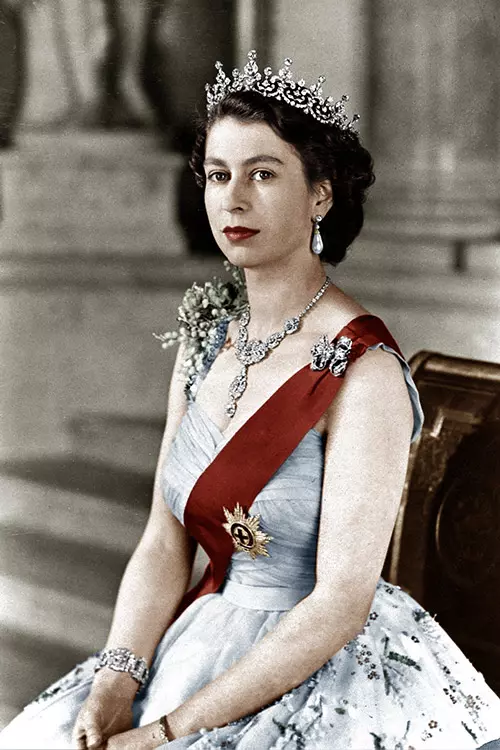
In 1952, Queen Elizabeth II created her own shade during her coronation. The shade was customized by the Queen’s favorite lipstick brand Clarins and called the ‘The Balmoral’. The color matched her coronation robe.

It was also during this era, Hazel Bishop successfully came up with a ‘kiss-proof’ lipstick. Soon enough, ‘Revlon’ came up with their own range of smudge proof long-lasting lipsticks and then the war of lipstick brands started.
1960s-1970s
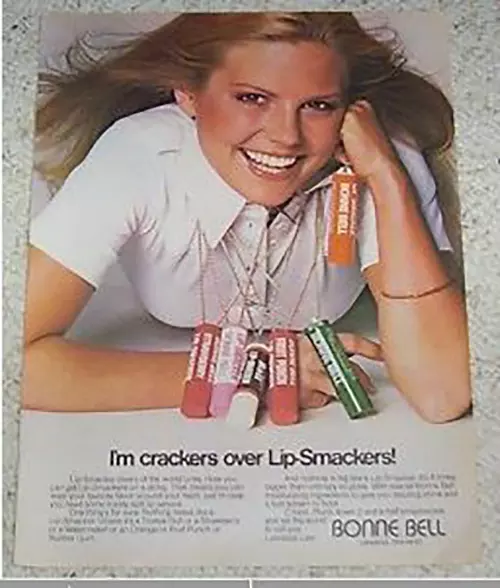
Lipstick drew inspiration from arts, and popular culture and a variety of shades came and went from the fashion scene. There was something to suit everybody’s preference. In 1973 Bonnie Bell introduced, ‘Lip Smackers’, that is lipstick with flavors. These became an instant hit with the younger crowd. Aerin’s Rose Balm Lipstick in Pretty and corals like Maybelline’s Orange Danger were some of the iconic shades of the era.
Nancy Roman, a blogger, recounts the very first time she applied lipstick and her overall experience with it. She states in her blog post, “I wore lipstick on Easter Sunday, 1963. I was twelve. In 1963, twelve was young for lipstick. None of my classmates were allowed. Only the grown-up girls. The eighth graders (i).” She further shares, “My lipstick was pink. “Pink Cameo”, I think, from Cutex.”
1980s

Lipsticks in the 1980s, much like everything was all about shimmers and gloss. The concept of power dressing came into being, and bold red lips were a statement once again. Matching your lip color with your outfits was common and in vogue. Hot pink lips became all the rage keeping up with dance party culture of the era. Goth lips were popular in some alternative sub cultures.
1990s

This was the era of grunge and makeup was simple. People were getting more and more conscious about the environment and the demand for chemical free, natural lipsticks grew. Tattooing or getting semi-permanent color on the lip was getting popular. But if the 90s is remembered as the era of lip liners. Nothing screams the 1990s more than darker lip liners with a lighter lipstick. Brands such as Mac and Urban Decay came into the scene.
2000 Onwards

The 2000s was all about Britney Spears, Christina Aguilera, and Paris Hilton. Shine was in and lip glosses were the favorite accessories once again.
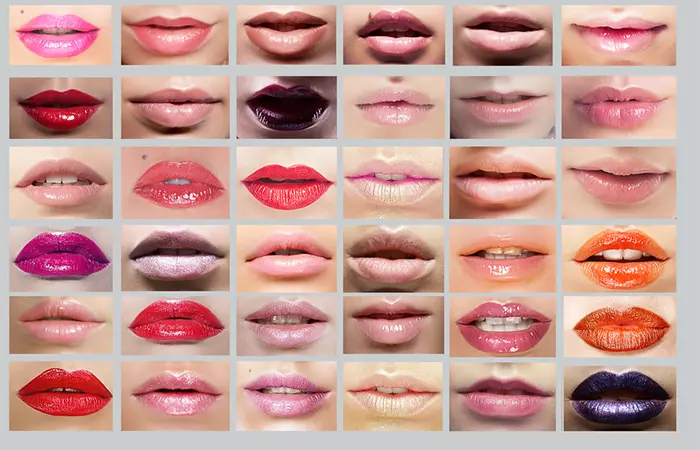
Now, the variety of colors and formulas of lipsticks available are mind-blowing, to say the least. Lipstick marketing trends have also changed over the years with more customers resorting to sustainable and organic lipsticks. According to a survey, on an average, women in the U.S.A spend more than $3500 dollars on lipstick in their lifetime. In recent years the youngest of the Kardashian-Jenner clan and social media sensation Kylie Jenner launching her line of lipsticks was perhaps another milestone in the history of lipsticks.
From nudes to pink to even wackier options like yellow or green, lipstick has truly become a symbol of self-expression.
Key Takeaways
- In the 19th century, lipstick was deemed inappropriate and banned in public places.
- During the Elizabethan period, lipstick indicated social status and was heavily used by the queen herself.
- The early 20th century revived the use of lipsticks and new variations were being made
- Today, lipstick is a staple in every woman’s makeup box and is available in abundant shades and types.
Infographic: Lipstick Through The Ages
No one can underestimate the power of a good lipstick and its ability to elevate your look in a matter of minutes. Be it a beginner or an expert, lipstick is an accessory one must have in their beauty arsenal. You must be wondering how it became so massively popular. Fret not, we have created an infographic that gives you a small peek at lipstick throughout the ages. Scroll down to know more!
Some thing wrong with infographic shortcode. please verify shortcode syntax
Aren’t you amazed to learn about the history of an essential makeup product that you have always used? We are sure you are. With time, lipsticks have indeed undergone a massive transformation. The ingredients used to manufacture lipstick have evolved drastically over the years. Earlier, harmful substances such as carmine and lead were used. Today, with the development of cosmetic science, safer ingredients such as natural waxes, oils, and pigments are used. Brands also have introduced a wide range of shades and colors of lipsticks. These products are also available in different textures, finishes, and shapes that cater to our unique needs. We are sure that next time when you look at the lipstick in your purse, you will definitely think of its amazing journey and evolution.
Frequently Asked Questions
What animal is lipstick made from?
Lipsticks may be made of ingredients derived from cows, sheep, pigs, whales, sharks, beetles, and other animals. But you can look for vegan lipstick or cruelty-free lipstick to avoid using animal-derived ingredients.
Is lipstick made of fish skin?
The glossy sheen of lipsticks is often derived from fish scales.
What does lipstick symbolize?
Over the centuries, lipstick has been associated with prostitution, sexuality, witchcraft, and women’s strength and rebellion.
Illustration: A Complete History And Evolution Of Lipsticks: Interesting Facts

Image: Stable Diffusion/StyleCraze Design Team
Experience the evolution of lipstick over the past 100 years! From classic reds to modern nudes, explore the beauty of lipstick through the decades in the following video.
Personal Experience: Source
StyleCraze's articles are interwoven with authentic personal narratives that provide depth and resonance to our content. Below are the sources of the personal accounts referenced in this article.
i. The History Of Lipstick, Chapter Onehttps://notquiteold.com/2011/08/13/the-history-of-lipstick-chapter-one/
Read full bio of Simone de Vlaming
Read full bio of Shalini Roy
Read full bio of Asmita De
Read full bio of Anu Pallavi








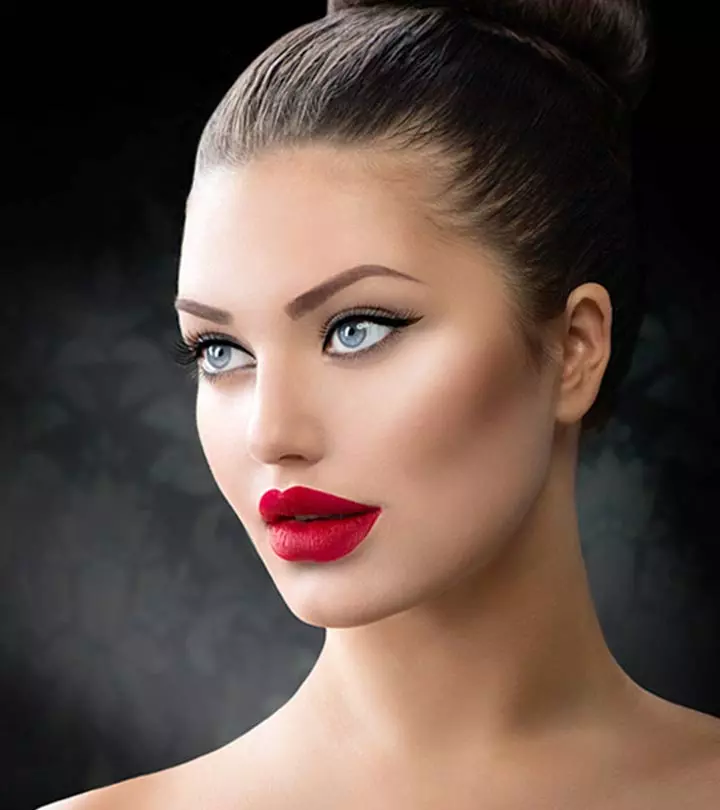
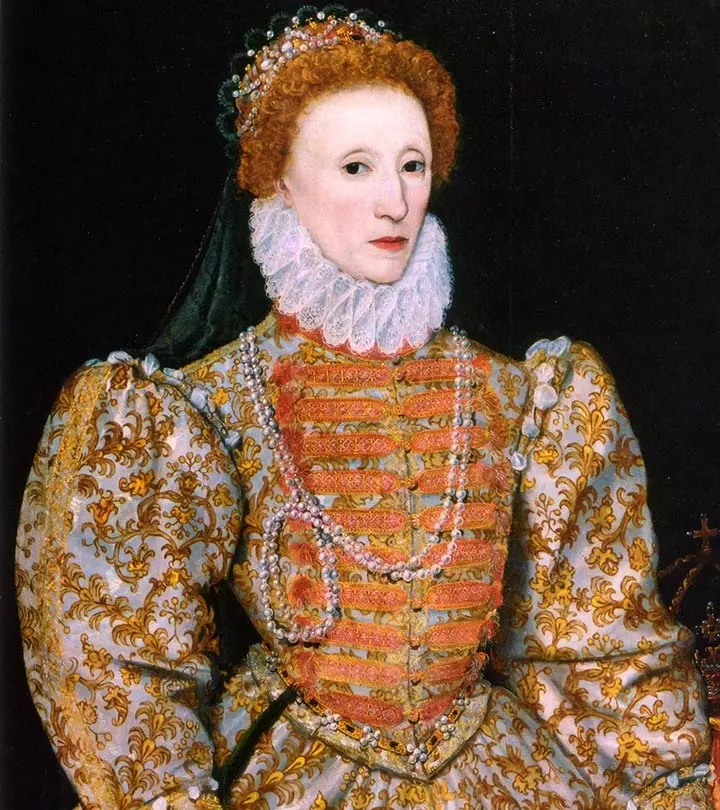

















Community Experiences
Join the conversation and become a part of our empowering community! Share your stories, experiences, and insights to connect with other beauty, lifestyle, and health enthusiasts.